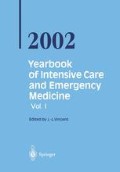Abstract
Snake envenomation is still a major health threat in different parts of the world [1, 2], particularly in rural areas and tropical and subtropical countries [3]. In North America, over 5000 Americans suffer from snakebites annually with as many as a quarter of these being from poisonous species [4]. The incidence of death from snakebites is low in most countries because of the quick availability of medical care, even in rural areas. In the United States, the mortality rate from snakebite is below 1% for victims who receive antivenom [5], while it is 0.5% per 2000 bites in France [6]. Worldwide, some 30,000-to-40,000 persons die every year as a result of venomous snakebite. These numbers seem, however, to underestimate the danger to the population since reports arriving from developing countries are incomplete.
Access this chapter
Tax calculation will be finalised at checkout
Purchases are for personal use only
Preview
Unable to display preview. Download preview PDF.
References
Downy DJ (1991) New Mexico Rattlesnake bites. Demographic review and guidelines for treatment. J Trauma 31:1380–1386
Holstege CP, Miller MB, Wermuth M, et al (1997) Crotalid snake envenomation. Med Toxicol 13:889–921
Pugh RN, Theakston RD (1980) The incidence and mortality of snake bites in Nigerian savanna. Lancet 29:1181–1183
Litovitz TL, Felberg L, White S (1996) 1995 annual report of the American Association of Poison Control Centers Toxic Exposure Surveillance System. Am J Emerg Med 14:487
Kunkle DB, Curry SC, Vance MV, et al (1983–1984) Reptile envenomations. J Toxicol Clin 21:503–526
Chippaux JP, Goyffon M (1989) Les morsures accidentelles de serpents en France metropolitaine. Presse Med 18:794–795
Cardoso JL, Pan HW, Franca FO, et al (1993) Randomized comparative trail of three anti-venoms in the treatment of envenoming by lance-headed viper (Bothrops jararaca) in Sao Paulo. Q J Med 86:315–325
Audebert F, Sorkine M, Robbe-Vincent A, et al (1994) Viper bites in France: Clinical and biological evaluation of kinetics of envenomations. Hum Exp Toxicol 13:685–688
Lalloo DG, Trevett AJ, Nwokolo N, et al (1997) Electrocardiographic abnormalities in patients bitten by taipans (Oxyuranus scutellatus canni) and other elapid snakes in Papua New Guinea. Trans R Soc Trop Med Hyg 91:53–56
Reid HA (1976) Adder bites in Britain. Br Med J 2:153–156
Warrell DA, Davidson NM, Omerod LD, et al (1974) Bites by the saw-scaled or carpet viper (Echis carinatus): trial of two specific antivenoms. Br Med J 4:437–440
Nayler WG, Sullivan AT, Dunnet J, et al (1976) The effects of a cardiotoxic component of the venom of the indian cobra (Naja nigricollis) on the subcellular structure and function of heart muscle. J Mol Cell Cardiol 8:341–360
Wollberg Z, Shabo-Shina R, Intrator N, et al (1988) A novel cardiotoxic peptide from the venom of Atractaspis engaddensis (burrowing asp): cardiac effects in mice and isolated rat and human heart preparations. Toxicon 26:525–534
Tibballs J, Sutherland SK, Rivera RA, et al (1989) The cardiovascular and haematological effects of purified prothrombin activator from the common brown snake (Pseudonaja textiles) and their antagonism with heparin. Anaesth Intensive Care 20:28–32
Than-Than, Francis N, Tin-Nu-Swe, et al (1989) Contribution of focal haemorrhage and microvascular fibrin deposition to fatal envenoming by Russell’s viper (vipera russelli siamensis) species in Burma. Acta Trop 46:23–38
Gearing AJ, Beckett P, Christodoulou M, et al (1994) Processing of tumor necrosis factor-alpha precursor by metalloproteinases. Nature 370:555–557
McGeehan GM, Becherer JD, Bast RC, et al (1994) Regulation of tumor necrosis factor-alpha processing by a metallproteinase inhibitor. Nature 370:558–561
Paine MJI, Moura-da-Silva AM, Theakston RDG, et al (1994) Cloning of metalloprotease genes in the carpet viper (Echis pyramidum leakeyi). Further members of the metalloprotease/disintegrin gene family. Eur J Biochem 224:483–488
Moura-da-Silva AM, Laing GD, Paine MJ, et al (1996) Processing of pro-tumor necrosis factor-alpha by venom metalloproteinases: A hypothesis explaining local tissue damage following snakebite. Eur J Immunol 26: 2000–2005
Lomonte B, Tarkowski A, Hanson LA (1993) Host response to Bothrops asper snake venom. Analysis of edema formation, inflammatory cells, and cytokine release in a mouse model. Inflammation 17:93–105
Szold O, Ben Abraham R, Weinbroum AA, et al (2001) Antagonization of TNF attenuates systemic hemodynamic manifestations of envenomation in a rat model of Vipera aspis snakebite. Intensive Care Med 27:884–888
Curry SC, Kunkel DB (1985) Death from a rattlesnake bite. Am J Emerg Med 3:227
Bonilla CA, Rammel OJ (1976) Comparative biochemistry and pharmacology of salivary gland secretion. Chromatographic isolation of a myocardial depressor protein (MDP) from the venom of Crotalus atrox. J Chromatogr 124:303–314
De Mesquita LC, Selistre H, Giglio JR (1991) The hypotensive activity of Crotalus atrox (western diamondback rattlesnake) venom: Identification of its origin. Am J Trop Med Hyg 44:345–353
Gurevitch J, Frolkins I, Yuhas Y, et al (1997) Anti-tumor necrosis factor-alpha improves myocardial recovery after ischemia and reperfusion. J Am Coll Cardiol 30:1554–1561
Riemsdijk-van Overbreeke C, Baan C, et al (1999) The TNF-in heart failure and after heart transplantation. Eur Heart J 20:833–840
Grossman GB, Rohdle LE, Clausell N (2001) Evidence for increased peripheral production of tumor necrosis factor-alpha in advanced congestive heart failure. Am J Cardiol 88:578–581
Editor information
Editors and Affiliations
Rights and permissions
Copyright information
© 2002 Springer-Verlag Berlin Heidelberg
About this paper
Cite this paper
Szold, O., Ben-Abraham, R., Sorkine, P. (2002). TNF as a Mediator of Cardiac Depression following Snakebite. In: Vincent, JL. (eds) Yearbook of Intensive Care and Emergency Medicine 2002. Yearbook of Intensive Care and Emergency Medicine 2002, vol 2002. Springer, Berlin, Heidelberg. https://doi.org/10.1007/978-3-642-56011-8_18
Download citation
DOI: https://doi.org/10.1007/978-3-642-56011-8_18
Publisher Name: Springer, Berlin, Heidelberg
Print ISBN: 978-3-540-43149-7
Online ISBN: 978-3-642-56011-8
eBook Packages: Springer Book Archive

